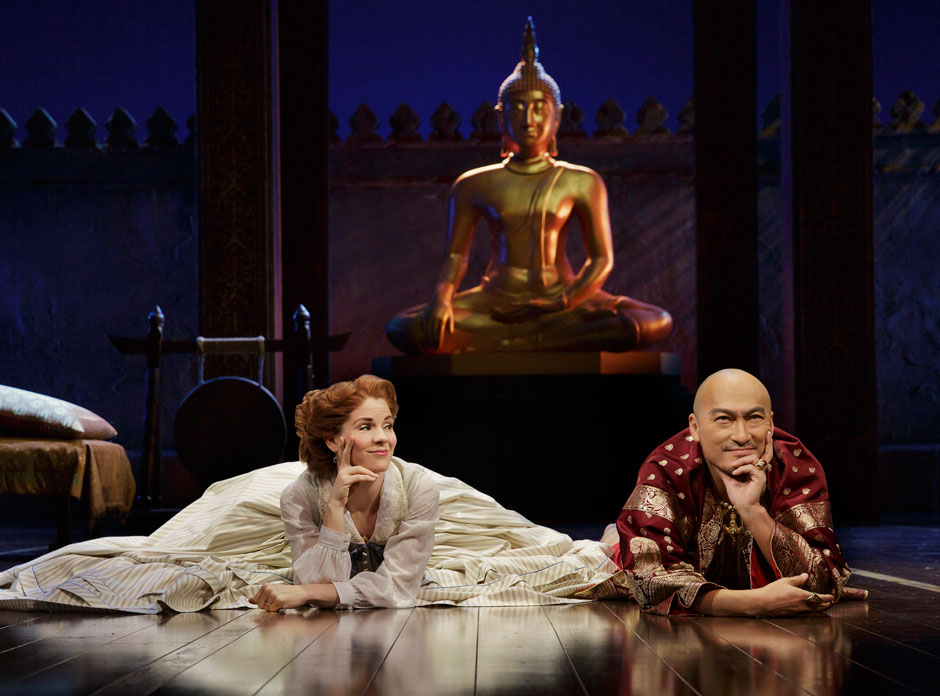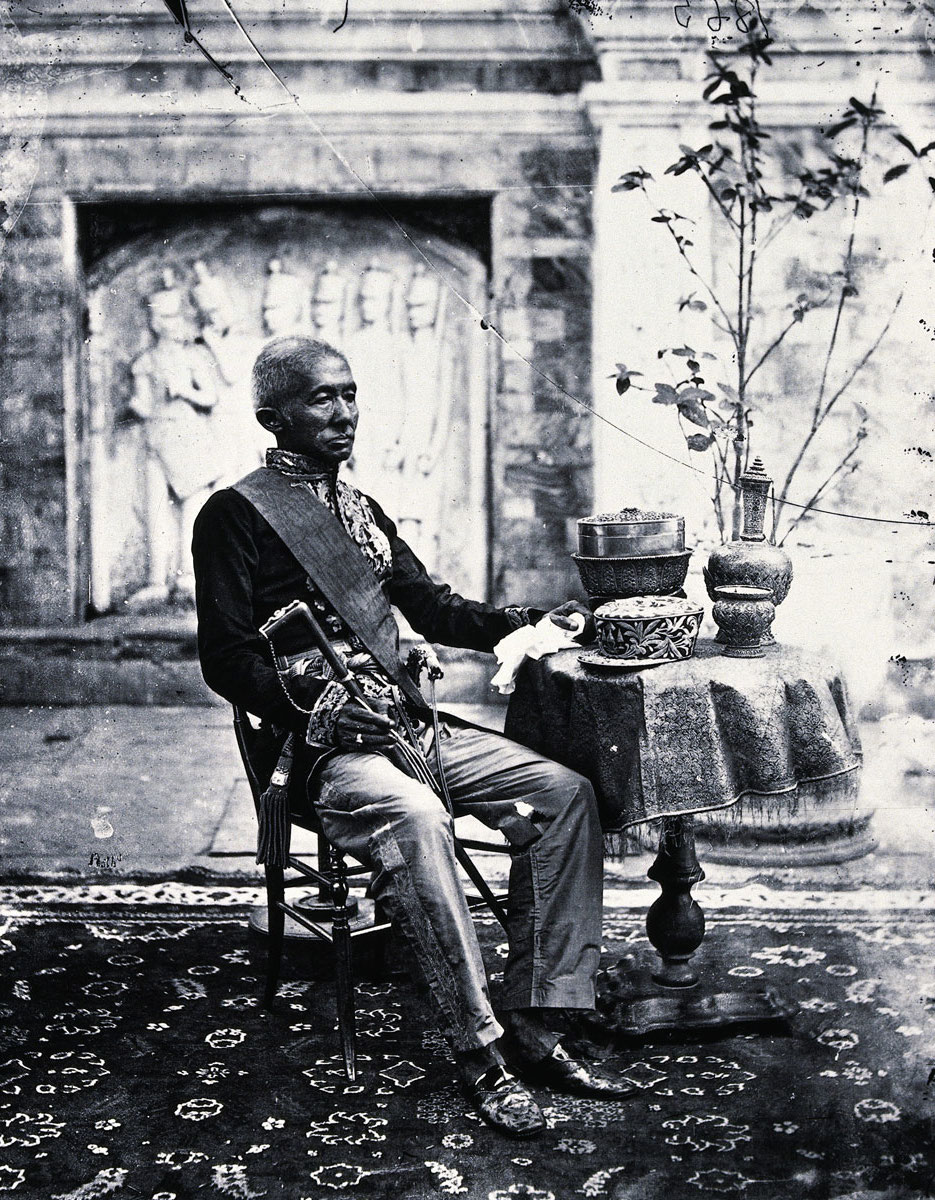The Thai government has never been fond of The King and I, the popular 1951 musical about an English schoolteacher’s tutoring of a nineteenth-century Thai king, now being revived on Broadway. It banned the movie of The King and I in 1956, and the remake, with Jodie Foster and Chow Yun-Fat, in 1999. There is little chance that any version of the Richard Rodgers and Oscar Hammerstein musical would pass the Thai censors today. Various reasons have been given: the story is historically inaccurate, the portrayal of the king as a comic figure, absurdly keen to show off that he is not a barbarian in Western eyes, is disrespectful, Jodie Foster’s Anna eclipsed the king on publicity posters, and so on.
The Thai authorities appear to be making a category mistake. Of course, the story is inaccurate. In the musical, the King of Siam, a child-like tyrant, is instructed by the apparently very English Anna Leonowens, in modern European ways, which cause him much “bafflement.” (The Japanese actor Ken Watanabe plays the king in the current production with great comic timing and panache; Kelli O’Hara as Anna crackles with hopeless desire.) In the process, he becomes less of a tyrant, almost docile. The story is actually a reversal of the usual Orientalist trope—Antony and Cleopatra, say—where the sultry Oriental female corrupts the virile Western male. Here the sexy and very masculine king falls under the spell of the prim European schoolmarm.
This is fantasy. The real King Mongkut, on whom the musical is based, was not a strutting Oriental sex symbol, but a scholarly old gentleman with an excellent command of Latin and several European languages. One of the most torrid scenes in the musical shows him about to crack a long whip across the back of Tuptim, his Burmese slave girl, for attempting to elope with her lover. In fact, King Mongkut, now known in Thailand as Rama IV, tried to improve the social status of women.
A keen astronomer and an expert in geography, the actual king was probably also far less baffled by Western scientific discoveries than was the musical monarch. And the influence of Anna on the Siamese court, not to mention her simmering romance with the king, has probably been vastly exaggerated, not least by the historical Anna Leonowens herself, in her memoir, The English Governess at the Siamese Court (1870)—which became the main source for the fanciful 1944 novel by Margaret Landon on which the musical is based. And, by the way, she was not a Welshwoman, as she claimed, but a Eurasian born in India who spent almost her entire life in one colony or another.
Nonetheless, the musical is more than a brilliant piece of froth. It dramatizes something historically profound about nineteenth-century Siam (the country was officially renamed Thailand by a military regime in 1948). The only two Asian countries to escape from being colonized by a Western nation were Siam and Japan. They achieved this through a combination of geographical luck, shrewd diplomacy, and what has been called “protection by mimicry.” The only way to keep Western powers at bay was to modernize as quickly as possible along Western lines. King Mongkut, portrayed in a famous photograph with his son and successor, Prince Chulalongkorn, in the full pomp of a European-style naval uniform, was not just interested in modern science—and European manners and institutions—out of curiosity. He saw it as his nation’s best defense against Western predators. That is one reason why he invited Anna Leonowens to teach English at his royal court.
But the impact of radical transformation in Siam, as well as in Japan under the Meiji Emperor, was cushioned by the deliberate reinforcement of traditional continuity. In Siam this was based on the twin institutions of royalty and Buddhism. No matter how much the elites mimicked the dress and manners of Westerners, deference to these updated and even invented traditions offered a sense of social coherence and national identity.
Often, of course, the twin tracks of modernization and tradition collided: science with religion, liberty with deference, Western education with Siamese customs. This is the stuff from which the drama of The King and I was made. The king wants Anna to help make his country modern, yet he behaves like a typical Oriental despot. Hence Anna’s outburst in her famous song, “Shall I Tell You What I Think of You”:
Everybody’s always bowing to the King
Everybody has to grovel to the King
By your Buddha you are blessed
By your ladies you’re caressed
But the one who loves you best is the KingAll that bowing and kowtowing
To remind you of your royalty
I find a most disgusting exhibition
It is clear from her memoir that the actual Anna did feel rather this way. This doesn’t mean, however, that groveling to absolute monarchs is an essential part of Thai culture. Much of the kowtowing had disappeared from Thai life in the first half of the twentieth century. When he became king in 1868, Chulalongkorn abolished the custom of crawling at the monarch’s feet during audiences. A military coup in 1932 ended the absolute powers of the king.
Advertisement
In fact, the awesome authority and reverential treatment of the King Bhumibol, the current Thai monarch, who was crowned in 1950, is largely a modern reinvention. At first, King Bhumibol had only limited authority. But after a military coup in 1957, led by General Sarit Dhanarajata, just a few years after the premiere of The King and I on Broadway, Bhumibol’s court began to play a much more central role in Thai life, and such customs as making people crawl in the royal presence were revived. Historians are divided over the question about whether the main actor in this revival was General Sarit or the king himself. In any case, monarchy and the Buddhist faith were strengthened in part to counter the influence of communism.
Far from being a purely Asian reaction to modern influences from the West, this was a policy encouraged by the US. The monarchy of the jazz-loving King Bhumibol echoes in many ways the nineteenth-century mixture of Westernization and invented tradition. Even as US military bases during the Vietnam War injected a crass form of American culture into Thai society, symbolized by the raucous girly bars that made Bangkok a favorite sexual tourist destination, the very aspects of Thai tradition deplored by Anna Leonowens, in life and fiction, were consciously reimposed: harsh laws on lèse majesté became an important tool in putting down political dissent.
These efforts have only become more pronounced today. King Bhumibol is old and in bad health. His son and likely successor, Prince Vajiralongkorn, is unpopular. The current military regime, which deposed the democratically elected Yingluck Shinawatra in a coup d’etat last year, might not want to give up power until the next monarch succeeds. That more people than ever are arrested for lèse majesté is a sign of considerable nervousness about how this will be managed.
Ironically, given the current situation in Thailand, The King and I ends, a little abruptly, with the king’s death. The last scene is touching, with the king, on his deathbed, giving his blessing to the enlightened ways he learned from his English governess. His son, Chulalongkorn, vows to abolish kowtowing at the royal court. Anna promises to stay on to guide the new king, while kneeling at the feet of the old one.
It is all wildly implausible (the real Anna was actually in England when the king died), but terrific theater, and a tribute in a way to the humanity of Siam. One cannot help feeling that the Thai authorities have a problem with the story, not because the revered monarch is portrayed as a primitive fool, but because in today’s light he is actually way too modern.
The King and I is playing at Lincoln Center through January 3, 2016.




